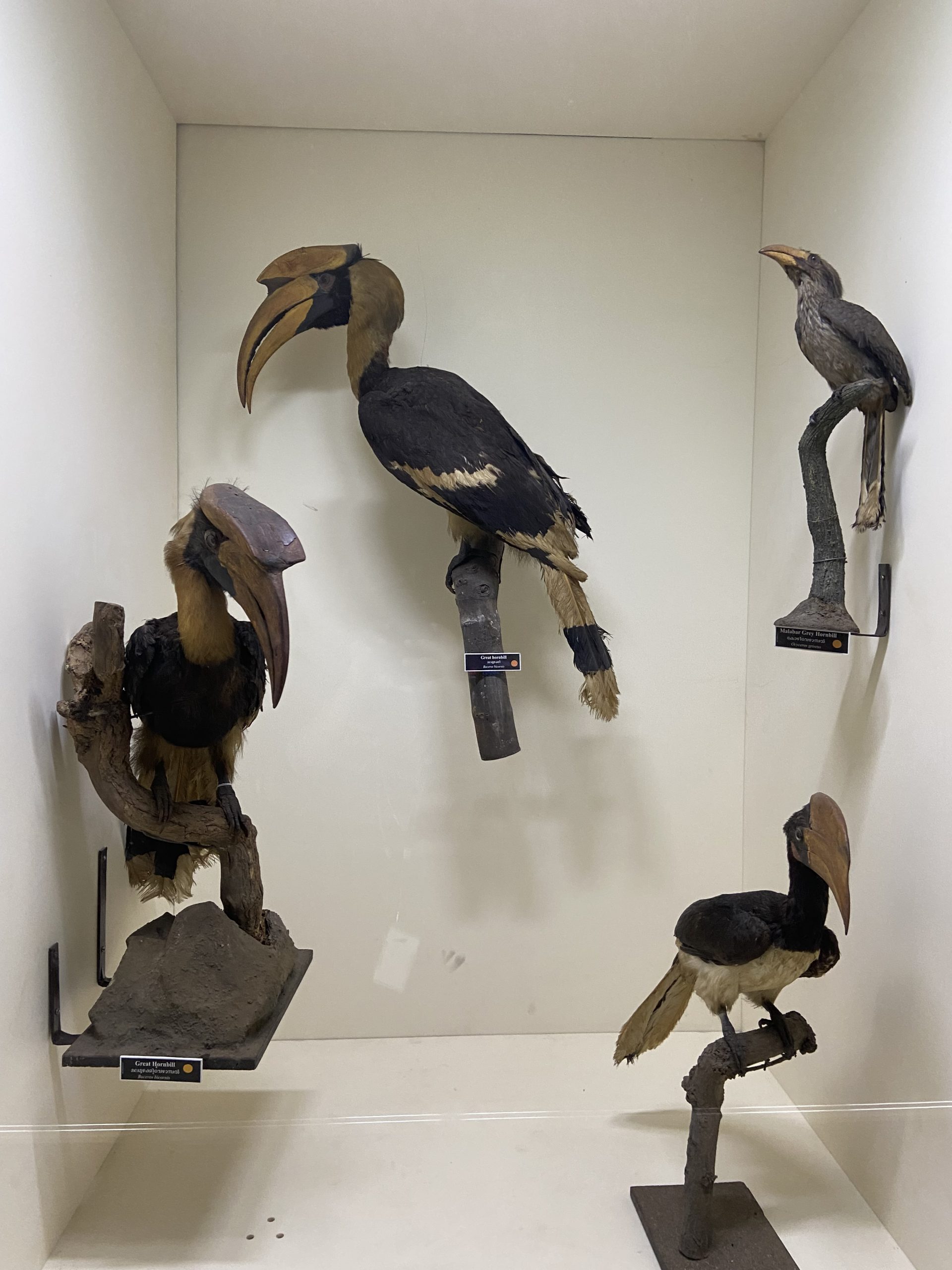
Hornbills (Bucerotidae)
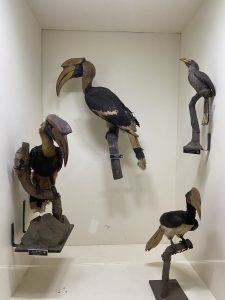 Hornbills are a family of bird found in tropical and subtropical Africa, Asia and Melanesia. They are characterized by a long, down-curved bill which is frequently brightly coloured and sometimes has a casque on the upper mandible.
Hornbills are a family of bird found in tropical and subtropical Africa, Asia and Melanesia. They are characterized by a long, down-curved bill which is frequently brightly coloured and sometimes has a casque on the upper mandible.
Diet
The family is omnivorous, feeding on fruit and small animals.
Behaviour
Hornbills are diurnal, generally travelling in pairs or small family groups.
Reproduction
They are monogamous breeders nesting in natural cavities in trees. The female confines herself within the cavity by sealing the entrance with a cement made from her own droppings. A small slit is retained through which the female voids its excreta and also receives food from its mate. During the incubation period the female undergoes a complete and simultaneous moult. When the chicks and the female are too big to fit in the nest, the mother breaks out the nest and both parents feed the chicks.
Did you know?
- They are the only birds in which the first and second neck vertebrae(the atlas and axis respectively) are fused together; this probably provides a more stable platform for carrying the bill.
- In the Neotropical realm, toucansoccupy the hornbills’ ecological niche, an example of convergent evolution.
Great hornbill (Buceros bicornis)
Description
The great hornbill is a large bird, and is the heaviest, but not the longest, Asian hornbill. The most prominent feature of the hornbill is the bright yellow and
black casque on top of its massive bill. Black face, wings, and breast contrast with white neck, belly, and tail. In flight, note the white tail with black band, and the black wings with a yellowish-white band and a white edge.
Sexual dimorphism – Sexes are similar, except that females have an entirely yellow casque, a pale iris, and bare pink skin around the eye.
Distribution – The great hornbill is native to the forests of India, Bhutan, Nepal, mainland Southeast Asia and Sumatra.
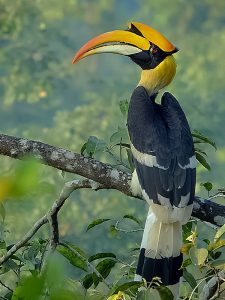
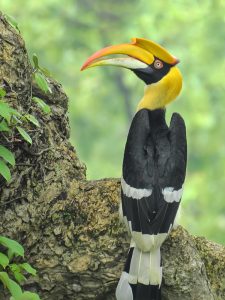
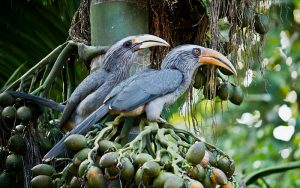 Malabar Grey Horn bill (Ocyceros griseus)
Malabar Grey Horn bill (Ocyceros griseus)
Description
Upperparts are dark grey, gr
eyish-white supercilium broadens behind eye. Head, crown, throat and breast have whitish streaks. Long tail is dark-grey, tipped with
white except for the central pair of feathers. Vent: – Cinnamon. Bill lacks on the upper mandible.
Sexual dimorphism – Male has golden brown iris while female have dark brown iris. Male has large bright orange bill with yellow tip, Female has plain yellow bill with black at the base of lower mandible and a black line along the culmen.
Distribution – Western Ghats from Maharashtra to Karnataka, Western Tamil Nadu and Kerala.
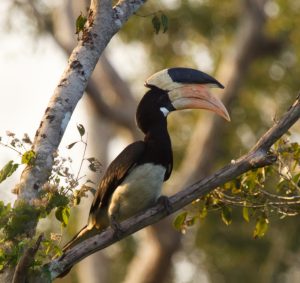
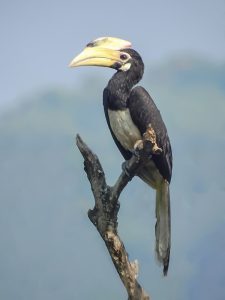
Malabar Pied Hornbill (Anthracoceros coronatus)
Description
It is a black and white arboreal bird. It has mainly black plumage, apart from its white belly, throat patch, tail sides and trailing edge to the wings. The bill is yellow with a large, mainly black casque.
Sexual dimorphism – Females have white orbital skin, which the males lack.
Distribution – Found in the forest of Central India (Madhya Pradesh, Telengana) and Eastern India Bihar, Odisha) and in the foothills of Western Ghats (Maharashtra, Karnataka, Kerala and Tamil Nadu).
